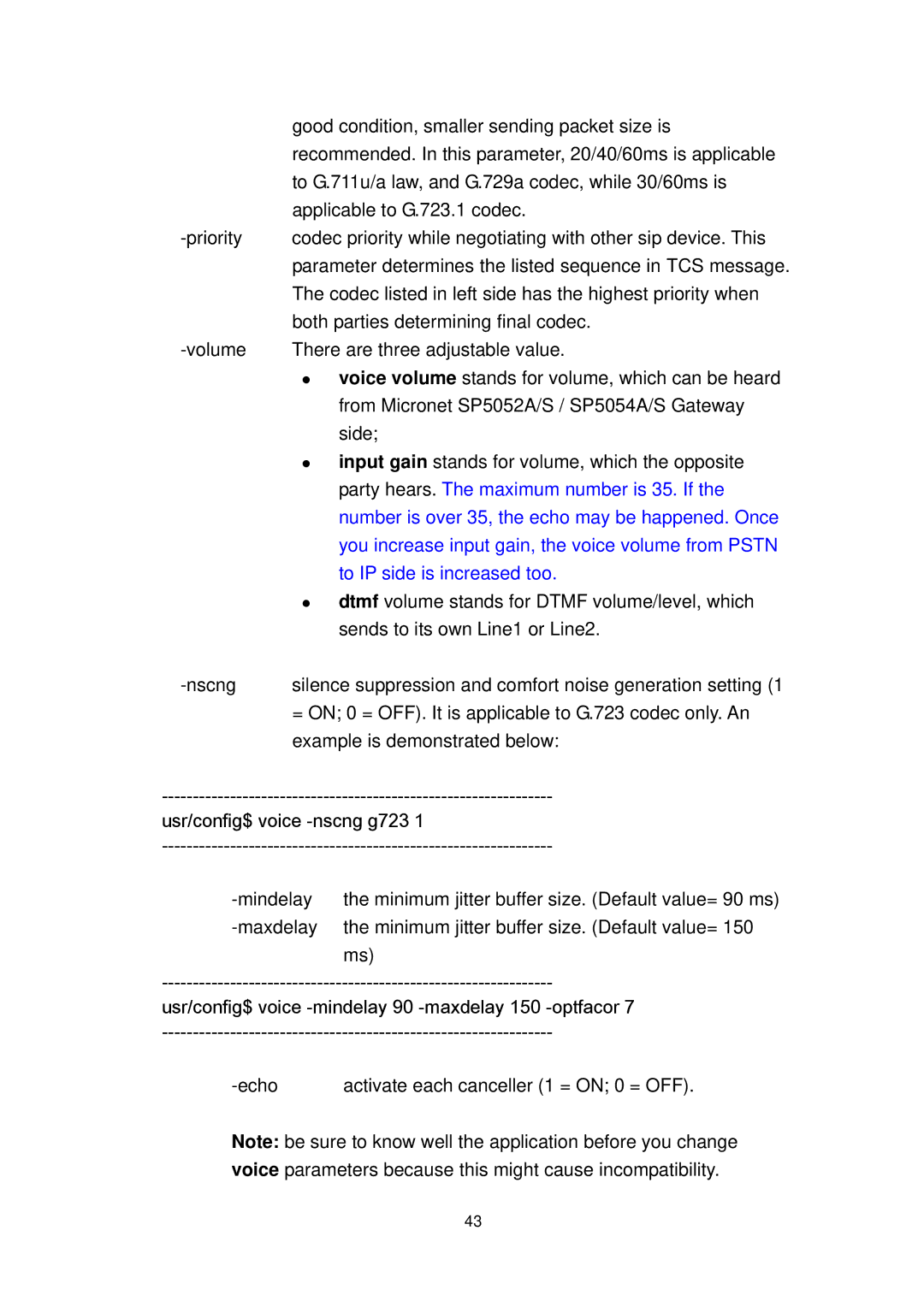| good condition, smaller sending packet size is |
| recommended. In this parameter, 20/40/60ms is applicable |
| to G.711u/a law, and G.729a codec, while 30/60ms is |
| applicable to G.723.1 codec. |
codec priority while negotiating with other sip device. This | |
| parameter determines the listed sequence in TCS message. |
| The codec listed in left side has the highest priority when |
| both parties determining final codec. |
There are three adjustable value. |
zvoice volume stands for volume, which can be heard from Micronet SP5052A/S / SP5054A/S Gateway side;
zinput gain stands for volume, which the opposite party hears. The maximum number is 35. If the number is over 35, the echo may be happened. Once you increase input gain, the voice volume from PSTN to IP side is increased too.
zdtmf volume stands for DTMF volume/level, which sends to its own Line1 or Line2.
silence suppression and comfort noise generation setting (1 | |
| = ON; 0 = OFF). It is applicable to G.723 codec only. An |
| example is demonstrated below: |
usr/config$ voice
the minimum jitter buffer size. (Default value= 90 ms) | |
the minimum jitter buffer size. (Default value= 150 |
ms)
usr/config$ voice
activate each canceller (1 = ON; 0 = OFF). |
Note: be sure to know well the application before you change voice parameters because this might cause incompatibility.
43
